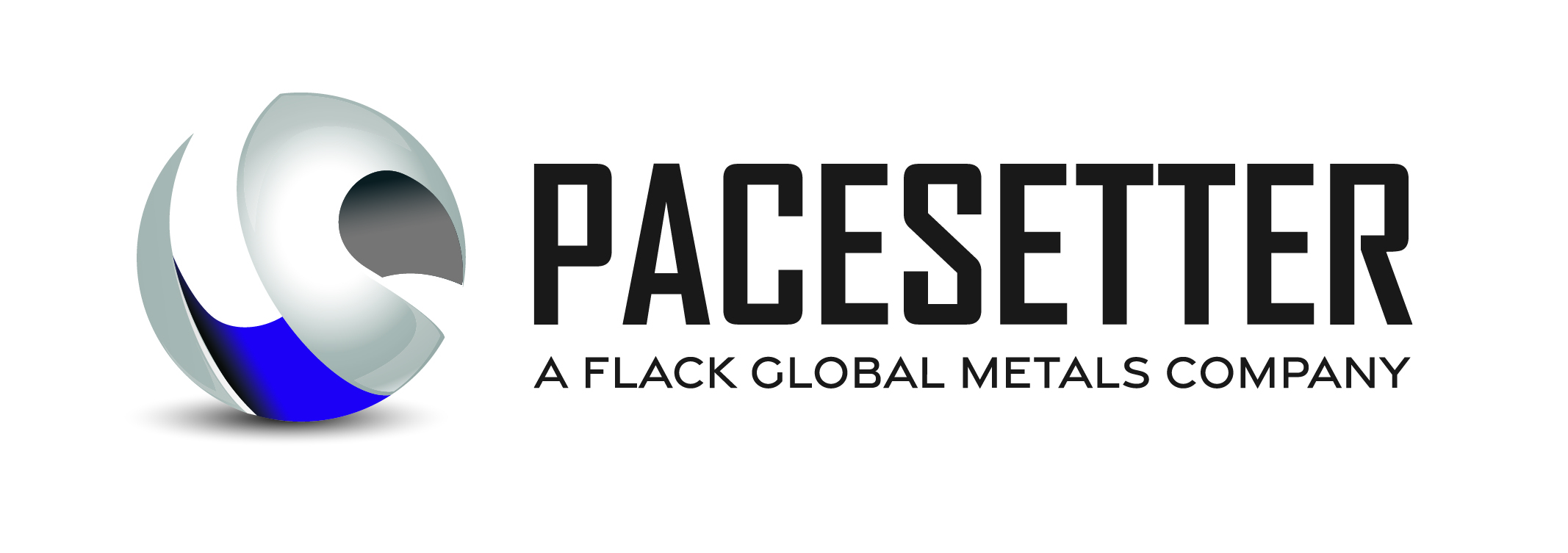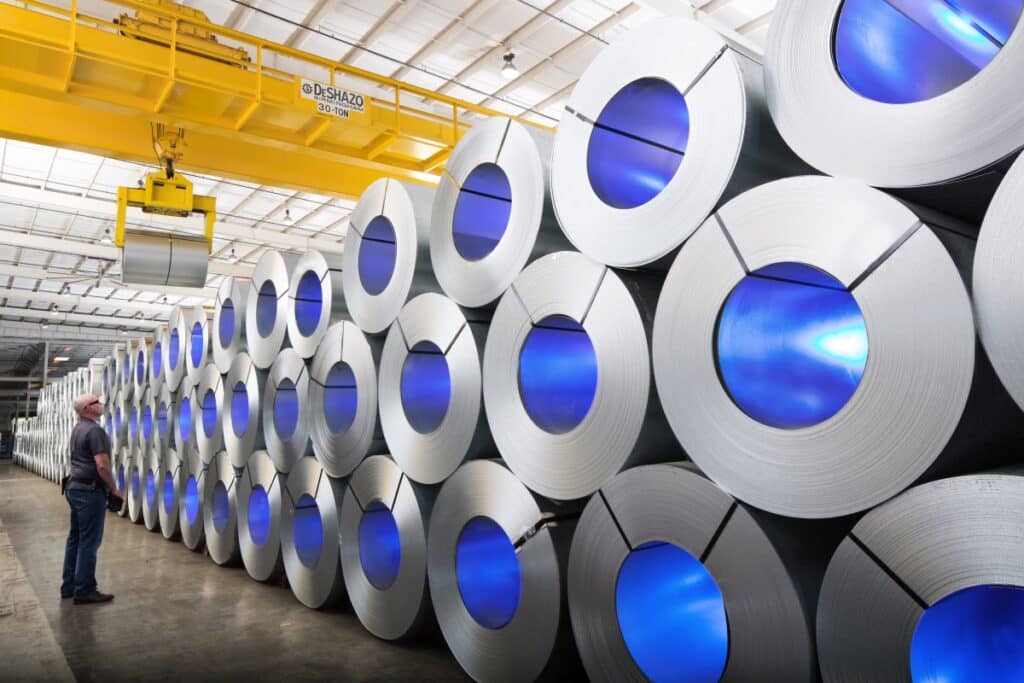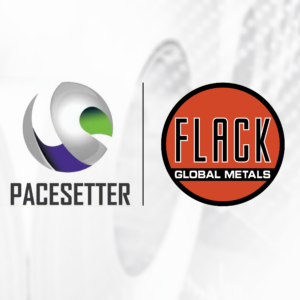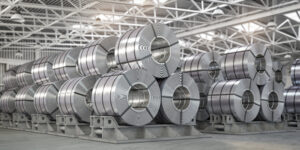Everything You Need to Know About Cold-Rolled Steel
Cold-rolled steel is one of the most common and practical forms of steel. It has a variety of applications, and Pacesetter is a trusted supplier of cold-rolled steel throughout the country. We start with premium, flat-rolled steel from domestic and offshore mills. We process our raw steel into various steel products, including cold-rolled, aluminized, stainless, galvanized, galvannealed, and galvanized bonderized steel.
Depending on your project, we can process your cold-rolled steel in various finishes, including embossed, perforated, prepainted, and fabricated. Pacesetter offers three primary steel processing services, which include slitting, blanking/multi-blanking, and cut-to-length.
Chat with one of our service representatives to tell us more about your project and how we can send you the cold-rolled steel you need. We invest in continuous research and development, and our customer team will ensure your steel is processed, finished, and sent to your facility to exceed your expectations. Learn more about our approach and in the meantime, dive into our definitive cold-rolled steel guide so you can learn everything you need to know about this versatile material.
What is Cold-Rolled Steel?
Cold-rolled steel (CRS) is a popular and versatile type of steel that has been used in the manufacturing industry for decades. What sets CRS apart from other types of steel is its ability to retain strength even at room temperature – it becomes slightly malleable.
This means for manufacturers, engineers, and designers that cold-rolled steel can be fashioned into many unique shapes without becoming weak or less functional as a result. This makes it incredibly versatile since the material can be shaped into complex patterns without sacrificing moveability or durability.
What is Cold-Rolled Steel Used For?
Cold-rolled steel is used for a variety of purposes, including fabrication, manufacture, and construction. This means for manufacturers that cold-rolled steel can be fashioned into countless unique shapes without becoming weak or less functional as a result. Manufacturers can shape cold-rolled steel into complex patterns without sacrificing moveability or durability.
Every time you see an architect creating unique shapes in their designs by wrapping around the structure like ribbons or bending it, so each section of the building connects seamlessly, it’s thanks to cold-rolled steel. Cold-rolled steel is used to create a variety of appliances, including:
- Kitchen appliances
- Ovens
- Stoves
- Refrigerators
- Furniture
- Filing cabinets
- Garages
- Industrial buildings
One of the most significant advantages of cold-rolled steel is that it is tough yet highly stylish. Manufacturers can create a diverse selection of products using cold-rolled because it works well with many different designs and looks attractive no matter what form it takes on. What this variety of uses also suggests, however, is that the material stands up to wear and tear very well, which adds value to items designed using it.
How Cold-Rolled Steel is Made
Large steel billets are heated until they reach a temperature of more than 1700 degrees Fahrenheit. The steel is flattened using industrial rollers and wound into large coils. As the steel cools to room temperature, the material shrinks, and surfaces are rough to the touch.
The material is processed further once it cools. Manufacturers continue to roll out the cooled material during a cold forming stage. Depending on how the client will use the product, workers can continue to draw, grind, and process the material. The cold-rolling process makes the steel up to 20% stronger than hard-rolled steel and improves the corrosion resistance. It will also have a much smoother and shiny finish compared to hot-rolled steel.
What Grade is Cold-Rolled Steel?
Cold-rolled steel comes in a variety of grades. Chat with one of our representatives to understand which cold-rolled steel grade will work best for your particular project.
Does Cold-Rolled Steel Have Mill Scale?
The mill scale, also known as iron oxide or iron rust, are layers that are formed on the exterior surface of the steel material during the process of rolling in a cold-working machine. It can be removed through polishing, grinding, and wire brushing processes.
Hot-rolled steel is rough and has a flaky surface that makes it hard to paint. On the other hand, cold-rolled steel doesn’t have a surface mill scale due to the additional processing. It is smooth and stronger than hot-rolled steel and much more accessible for manufacturers to apply various finishing techniques.
What Type of Steel is Cold-Rolled?
Cold-rolled steel is simply hot-rolled steel with additional processing to make it a smoother and more versatile material.
Cold rolled steel is a versatile sheet metal product formed by passing a steel strip through a pair of rolls called “stands,” which have been preheated to a specific temperature. The first stand exerts pressure and reduces the thickness of the steel as it enters the roll gap, while the second stand forces the steel into additional pinch rolls lining either side of its path.
The final step in cold-rolling is annealing. The steel exits the last set of pinch rolls just before entering a furnace at approximately 1400 degrees F(760 degrees C). Any internal stresses from rolling can be removed, and the sheet is softened for further processing.
What’s the Difference Between Hot Rolled and Cold-Rolled Steel?
Cold-rolled steel is essentially hot-rolled steel that is additionally processed. To initially create hot-rolled steel, suppliers start with rectangular billets of steel that pre-processes through larger rollers. The raw material is rolled at very high temperatures that exceed 1700 degrees Fahrenheit.
The steel shrinks as it cools, and the final product has a coarse and varied shape. Hot-rolled steel is cheaper than cold rolled steel due to the lack of additional labor. It’s ideal for construction projects or for needs when the aesthetic quality of the steel is not important, such as railroad tracks.
Suppliers use hot-rolled steel, and once it has cooled, they continue to re-roll that material at room temperature. The finished product has a more consistent shape, smoother surface, and precise dimensions. However, it is also more expensive.
Which Steel is Stronger
Cold-rolled steel has more strength and durability than hot-rolled because of its relatively low-alloy content. However, it will be slightly less malleable and have a lower thermal conductivity compared to hot rolled. Cold-rolled steel can then be annealed back to its intended level of malleability if desired for further forming.
Is Stainless Steel Harder Than Cold-Rolled Steel?
Stainless steel is typically harder than cold rolled. There are two tests done to measure the hardness of metals: the Brinell Hardness Test and the Rockwell Hardness Test. The test used depends on the type of material being tested.
If it is softer, then Brinell can be used, but typically Rockwell is the most commonly used hardness tester for metals because it does not leave any surface damage to the parts being tested. There are many different grades of stainless steel, and they all vary in their levels of hardness and corrosion resistance. We can process your cold-rolled steel suitable to your project needs.
Contact Us for a Consultation and Quote For Your Next Cold-Rolled Steel Project!
Please fill out the form below to coordinate with one of our steel service experts. We can discuss your project needs and provide you with the cold-rolled steel you need at the best price.
Everything You Need to Know About Cold–Rolled Steel
Cold–rolled steel is one of the most common and practical forms of steel. It has a variety of applications, and Pacesetter is a trusted supplier of cold–rolled steel throughout the country.
Depending on your project, we can process your cold–rolled steel in various finishes, including embossed, perforated, and prepaint. Pacesetter offers three primary steel processing services, which include slitting, blanking/multi-blanking, and cut-to-length.
Chat with one of our service representatives to tell us more about your project and how we can send you the cold–rolled steel you need. We invest in continuous research and development, and our customer team will ensure your steel is processed, finished, and sent to your facility to exceed your expectations. Learn more about our approach and in the meantime, dive into our definitive cold–rolled steel guide so you can learn everything you need to know about this versatile material.
What is Cold–Rolled Steel?
Cold–rolled steel (CRS) is a popular and versatile type of steel that has been used in the manufacturing industry for decades. What sets CRS apart from other types of steel is its ability to retain strength even at room temperature – it becomes slightly malleable.
This means for manufacturers, engineers, and designers that cold–rolled steel can be fashioned into many unique shapes without becoming weak or less functional as a result. This makes it incredibly versatile since the material can be shaped into complex patterns without sacrificing moveability or durability.
What is Cold–Rolled Steel Used For?
Cold–rolled steel is used for a variety of purposes, including fabrication, manufacturing, and construction.
Every time you see an architect creating unique shapes in their designs by wrapping around the structure like ribbons or bending it, so each section of the building connects seamlessly, it could be thanks to cold–rolled steel. Cold–rolled steel is used to create a variety of appliances, including:
- Kitchen appliances
- Ovens
- Stoves
- Refrigerators
- Furniture
- Filing cabinets
- Garages
- Industrial buildings
One of the most significant advantages of cold–rolled steel is that it is tough yet highly stylish. Manufacturers can create a diverse selection of products using cold–rolled because it works well with many different designs and looks attractive no matter what form it takes on. What this variety of uses also suggests, however, is that the material stands up to wear and tear very well, which adds value to items designed using it.
How Cold-Rolled Steel is Made
Making flat-rolled cold rolled steel begins with coils of hot rolled steel. The coils are cleaned to get rid of any scale and then are run through a series of rolling stands at room-temperature. This process makes the steel denser and stronger. After cold rolling, the steel is annealed to eliminate internal stresses and improve mechanical properties. Annealing is the process of heating and gradually cooling steel coils in annealing ovens. These ovens can either be continuous (in-line) or they can be a stand-alone process. Steel produced by this method has a smoother surface, is stronger, and has better dimensional accuracy, making it ideal for the manufacture of appliances, cars, and buildings.
What Grade is Cold–Rolled Steel?
Cold–rolled steel comes in a variety of grades. Chat with one of our representatives to understand which cold–rolled steel grade will work best for your particular project.
Does Cold–Rolled Steel Have Mill Scale?
Mill scale, also known as iron oxide or iron rust, are layers that are formed on the exterior surface of steel during the steel-making process. It can be removed through pickling, polishing, grinding, and wire brushing processes.
Hot–rolled steel is rough and has a flaky surface that makes it hard to paint. On the other hand, cold–rolled steel doesn’t have surface mill scale due to the additional processing. It is smooth and stronger than hot–rolled steel and much more accessible for manufacturers to apply various finishing techniques.
What Type of Steel is Cold–Rolled?
Cold–rolled steel is simply hot–rolled steel with additional processing to make it a smoother and more versatile material.
Cold rolled steel is a sheet metal product formed by passing a steel strip through a series of “stands”. Each stand is a set of rolls which exert force on the top and bottom of the strip which reduces the thickness of the steel. The final step in cold-rolling is annealing. In a continuous cold mill, the annealing is handled in-line. The other option is for the cold rolled, full hard coils to be moved to stand-alone annealing ovens. After spending the appropriate amount of time in the ovens based on the ordered grade, the cold rolled coils are then run on a temper mill. This improves the surface finish, fine-tunes the material’s hardness, and enhances flatness.
Is Stainless Steel Harder Than Cold–Rolled Steel?
Stainless steel is typically harder than cold rolled. There are two tests done to measure the hardness of metals: the Brinell Hardness Test and the Rockwell Hardness Test. The test used depends on the type of material being tested.
If it is softer, then Brinell can be used, but typically Rockwell is the most commonly used hardness tester for metals because it does not leave any surface damage to the parts being tested. There are many different grades of stainless steel, and they all vary in their levels of hardness and corrosion resistance. We can process your cold–rolled steel suitable to your project needs.
Contact Us for a Consultation and Quote For Your Next Cold–Rolled Steel Project!
Please fill out the form below to coordinate with one of our steel service experts. We can discuss your project needs and provide you with the cold–rolled steel you need at the best price.




